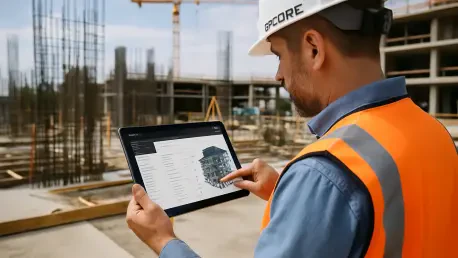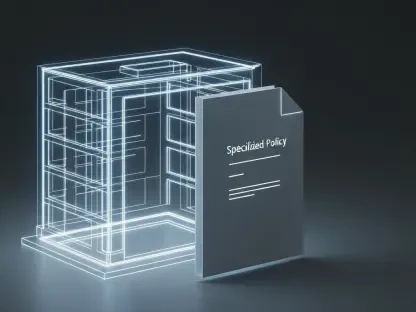In the fast-evolving world of construction technology, Procore Technologies (PCOR) stands out as a company not merely adapting to change but actively driving it. With the construction industry undergoing a significant digital transformation, Procore has positioned itself as a leader by delivering innovative software solutions that address critical pain points like project delays and cost inefficiencies. The company’s recent financial performance in Q2 of this year has sparked considerable interest among investors and industry watchers, showcasing a shift from a high-growth, capital-intensive phase to a more sustainable, profit-focused model. This transition, backed by strategic initiatives and a robust market presence, suggests that Procore is on the cusp of long-term success. As digital tools become indispensable in construction, understanding how Procore is capitalizing on these trends offers valuable insight into the future of the sector and the company’s role in shaping it.
Financial Milestones Signaling Stability
Procore’s financial results for Q2 of the current year have painted a promising picture of a company maturing into a phase of sustainable profitability. Revenue reached an impressive $324 million, reflecting a 14% increase compared to the previous year and exceeding what analysts had anticipated. Even more noteworthy is the adjusted earnings per share of $0.35, which also beat expectations. The non-GAAP gross margin climbed to 83%, up from 79%, while the non-GAAP operating margin turned positive at 13%. These figures highlight a deliberate focus on cost discipline and a strategic pivot toward high-margin Software-as-a-Service (SaaS) offerings. Such improvements indicate that Procore is no longer just chasing growth at any cost but is instead building a business model designed to deliver consistent value to shareholders and clients alike, marking a pivotal shift in its operational approach.
Beyond the headline numbers, Procore’s cash flow metrics further underscore this new era of financial health. The company reported a positive operating cash flow of $31 million and a free cash flow of $11 million, a stark contrast to earlier periods of consistent cash burn. This achievement reflects not only improved operational efficiency but also a more balanced approach to reinvestment and profitability. Leadership’s emphasis on streamlining expenses without sacrificing innovation has clearly paid off, as evidenced by these cash flow gains. For a tech company in a capital-intensive sector like construction software, reaching this level of financial stability is no small feat. It positions Procore as a more reliable investment option while providing the resources needed to fund future growth initiatives, ensuring that the company can continue to innovate and expand its market reach without the burden of financial strain.
Dominance in a Booming Market
The construction software market is experiencing explosive growth, with projections estimating its value at $10.76 billion this year and a compound annual growth rate (CAGR) of 10.1% through 2032. Procore holds a commendable 7.4% market share, placing it as the second-largest player behind Autodesk. Unlike Autodesk, which primarily focuses on Building Information Modeling (BIM) tools, Procore differentiates itself by tackling core industry challenges such as cost overruns and poor collaboration through a comprehensive platform for project management, scheduling, and field operations. With North America accounting for 42.45% of global demand, Procore’s strong presence in this region provides a significant advantage. This market positioning not only underscores the company’s relevance but also highlights its potential to capture an even larger share as digital adoption in construction accelerates globally.
Moreover, Procore’s ability to address real-world needs in construction sets it apart in a crowded field. The integrated nature of its platform allows contractors and project managers to streamline workflows, reduce errors, and improve communication across teams, directly impacting project outcomes. As urbanization and infrastructure development continue to drive demand for efficient construction solutions, Procore’s tailored offerings resonate strongly with its client base. The company’s focus on solving practical problems rather than just providing niche tools gives it a competitive edge over rivals who may prioritize specific technical functionalities over broader usability. This strategic alignment with industry needs ensures that Procore remains a go-to solution for firms looking to modernize their operations, further solidifying its standing in a market ripe with opportunity for sustained expansion.
Strategic Innovations Driving Expansion
Procore is not content to simply maintain its current position; it is actively pursuing strategies to ensure future growth. Recent acquisitions, such as Novorender and Flypaper Technologies, have significantly enhanced its BIM capabilities, aligning with emerging industry trends like digital twins and real-time data analytics. These moves demonstrate a forward-thinking approach to meeting the evolving demands of the construction sector. Additionally, the company’s pursuit of FedRAMP compliance is a calculated step toward accessing the lucrative U.S. federal contract market, projected to reach $2.41 billion by 2034. Such initiatives highlight Procore’s ambition to diversify its revenue streams and tap into high-value opportunities that could further accelerate its growth trajectory over the coming years.
Equally compelling is Procore’s investment in artificial intelligence (AI) to automate critical tasks like safety monitoring and project tracking. By integrating AI into its platform, the company is positioning itself at the forefront of technological innovation in construction, where efficiency and precision are paramount. This focus on cutting-edge technology not only enhances the value of its offerings but also makes Procore’s solutions increasingly indispensable to clients seeking to stay competitive. Unlike competitors who may lag in adopting such advancements, Procore’s proactive stance ensures it remains relevant in a landscape where digital tools are becoming the norm. These strategic efforts, combined with a clear vision for expansion, suggest that Procore is not just reacting to industry shifts but is actively shaping the future of construction technology with bold, innovative steps.
Customer Loyalty as a Bedrock for Success
A key pillar of Procore’s stability lies in its exceptionally strong customer base, evidenced by a 95% gross revenue retention rate. This high level of client loyalty indicates that once users adopt Procore’s platform, they are unlikely to switch to alternatives, a testament to the software’s effectiveness and reliability. Furthermore, the company has seen a 15% year-over-year increase in organic customers spending over $100,000 annually, with a total of 17,501 such clients now using its services. This growth in high-value accounts reflects not just satisfaction but a deepening reliance on Procore’s tools for critical operations. Such a sticky, recurring revenue model provides a predictable income stream, essential for planning and executing long-term growth strategies without the uncertainty of fluctuating sales.
Beyond retention, the organic growth of Procore’s customer base points to a scalable business model that can expand without heavy reliance on costly acquisition tactics. As more firms, particularly those with significant budgets, integrate Procore’s platform into their workflows, the company builds a robust foundation for sustained earnings. This organic expansion also serves as a buffer against market volatility, ensuring that Procore can maintain momentum even if external conditions shift. The trust and dependency clients place in Procore’s solutions are clear indicators of its market fit, suggesting that as the construction industry continues to digitize, Procore will likely see even greater adoption. This customer-centric strength is a critical asset, positioning the company to capitalize on industry trends while maintaining a stable financial outlook for the foreseeable future.
Challenges and Resilience in a Dynamic Sector
While Procore’s outlook appears bright, it is not without significant challenges that warrant attention. Competition in the construction software space is intensifying, with major players like Autodesk advancing their own AI-driven workflows and cloud-based solutions to capture market share. These rivals pose a real threat to Procore’s growth if they can offer comparable or superior tools at competitive prices. Additionally, external factors such as potential slowdowns in construction spending due to economic uncertainty could dampen demand for software solutions. Regulatory hurdles, particularly in securing federal contracts, also present obstacles that could delay or derail strategic plans. Navigating this competitive and economic landscape requires careful planning and agility to maintain the current pace of progress.
Despite these risks, Procore exhibits a level of resilience that mitigates some of the potential downsides. Its diversified customer base, spanning various segments of the construction industry, reduces reliance on any single market or client group, offering protection against localized downturns. The recurring revenue model further insulates the company from sudden drops in new business, providing a steady cash flow even in tougher times. Compared to smaller or less established competitors, Procore’s entrenched position and loyal clientele offer a competitive buffer that many lack. While challenges are inevitable in such a dynamic sector, Procore’s structural strengths suggest it is better equipped to handle headwinds, ensuring it can continue to pursue growth without being derailed by short-term setbacks or competitive pressures.
Reflecting on a Path Forward
Looking back, Procore Technologies has demonstrated remarkable strides in redefining its financial narrative, with standout Q2 results that marked a clear departure from earlier cash-burning tendencies. The company’s ability to balance robust growth with newfound profitability was evident in improved margins and positive cash flows, setting a precedent for operational excellence. Strategic acquisitions and technological advancements, particularly in AI, underscored a commitment to innovation that kept Procore ahead of industry curves. For stakeholders, the journey so far offered a glimpse into a company not just surviving but thriving amid competitive and economic challenges. Moving forward, the focus should be on leveraging these achievements to further penetrate untapped markets, refine AI-driven tools, and secure high-value federal contracts. By continuing to prioritize customer retention alongside expansion, Procore can solidify its role as a cornerstone of construction technology, paving the way for even greater impact in the years ahead.









